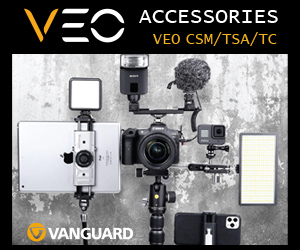Photographing Extreme Sports – by Noriyuki Watabe
Soon after I got my hands on the TAMRON 35-150m F/2-2.8 Di III VXD (Model A058), I gave it a try at the Extreme Sports Competition.

35mm, f/2.0, 1/400 sec., ISO 1600
Although my first impression was its solid heft, I was reassured by its astonishing compactness for such a monstrous lens, which was 35-150mm with a maximum aperture of F2. The first thing that stood out was the lens’s excellence at both the 35mm and 150mm ends. At 35mm F2, the image was in no way inferior to fixed focal lenses, which gave me a rush of adrenaline. At 150mm F2.8, although it is common for lenses with superior wide-angle performance to make sacrifices on the telephoto end, this lens was impeccable both in resolution and colors, which was a pleasure. As I had many opportunities to shoot portraits during the event, I was able to capture portraits of the athletes in the competition.

56mm, f/2.8, 1/100 sec., ISO 1600
This lens made me so happy that I wanted to gather people representing all of the styles for a shoot: skateboarding, BMX and inline skating, and I took action to make it happen at the skate park on a different day. Each style is unique and has a different speed, distance to the subject and moving style, and I tested how well I could take images with this lens.

150mm, f/2.8, 1/400 sec., ISO 1600
Before shooting, I customized the lens with TAMRON’s new function, TAMRON Lens Utility, which was spot-on: As was written in several TAMRON reviews, this lens can be personally customized to make it easier to use and allows the photographer to focus more on shooting.

90mm, f/2.8, 1/400 sec., ISO 1600
When I was shooting images at each event, I’ve held this lens in my hands an average of about five hours. I thought I would certainly get used to the weight of the lens as I used it more. After discovering the lens’s superiority at 35mm and 150mm, the next advantage I encountered was its medium focal lengths. I tried focal lengths of the standard fixed focal lenses: 50mm, 85mm, 90mm and 100mm. Then I used all the focal lengths close to these, honestly, everything was ideal. The lens produced breathtaking image quality across the whole range. Lines were clear at every focal length, which enabled the lens to be used flexibly and with confidence at shoots. It was comfortable to use, and there were no problems in terms of the feel of the materials or the position of buttons while taking photos. Moreover, although this is a zoom lens with wide range of focal lengths, it also permits close-up photos.

87mm, f/2.8, 1/400 sec., ISO 1600
I certainly felt that this was a lens that TAMRON put a huge amount of effort into.
In addition, this zoom lens eliminated the need to have multiple fixed focal lenses, giving the user a sense of security even when using just this single lens. In my case, I was able to handle all situations using two lenses: the 17-28mm F2.8 (Model A046) and this 35-150mm F2-2.8 (Model A058). This is totally amazing. In practice, shoots often require a lot of equipment, so many people must want to reduce this as much as possible. This lens will help for realizing this. I recommend that you give it a try.

56mm, f/2.8, 1/100 sec., ISO 1600

51mm, f/2.8, 1/125 sec., ISO 400
by Noriyuki Watabe






